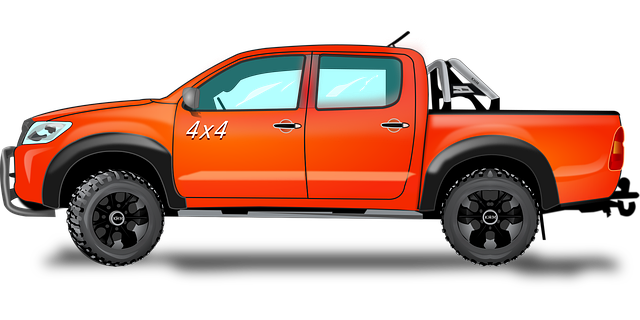Receiver hitches, vital components for secure towing, connect trucks to trailers or heavy loads via a metal device mounted in the bed. With DIY-friendly installation guided by a truck repair manual Brownsville, these hitches enable hauling diverse items from small trailers to large equipment, enhancing outdoor activities, moving, and business needs. Proper maintenance, as outlined in the manual, extends hitch lifespan while addressing issues like misalignment, cable damage, and corrosion for safe and effective towing. Selecting the right hitch for your truck model ensures compatibility, weight capacity, and electrical requirements, per Brownsville's repair manual recommendations.
“Unleash the potential of your truck with the power of receiver hitches, a versatile towing solution. This comprehensive guide delves into the world of receiver hitches, offering a basic understanding and highlighting their advantages for your vehicle. From installation tips borrowed from a trusted truck repair manual to troubleshooting common issues, we ensure your journey is smooth.
Learn how to choose the perfect receiver hitch for your Brownsville truck, ensuring longevity and optimal performance, all while exploring the benefits this upgrade brings.”
- Understanding Receiver Hitches: A Basic Overview
- Why Choose Receiver Hitches for Your Truck?
- Installation Process: A Step-by-Step Guide from a Truck Repair Manual
- Common Issues and Troubleshooting Tips
- Maintenance and Care for Longevity
- Choosing the Right Receiver Hitch for Your Truck in Brownsville
Understanding Receiver Hitches: A Basic Overview

Receiver hitches are a crucial component for anyone towing trailers or hauling heavy loads with their truck. They serve as the connection point between your vehicle and the trailer, allowing for secure and stable towing. In simple terms, it’s a metal device that attaches to the back of a truck bed and accepts a hitch ball from the trailer, ensuring a safe and sturdy link.
For those who need to perform truck repair in Brownsville or understand their vehicle better, knowing about receiver hitches is essential. A typical receiver hitch consists of a tube-like structure mounted in the bed of your truck, with a hole aligned for the hitch ball. This setup allows for easy towing, enabling you to transport various items from small trailers to large equipment with ease. Referring to a comprehensive truck repair manual can provide detailed instructions on how to install and maintain these hitches effectively.
Why Choose Receiver Hitches for Your Truck?

When it comes to enhancing your truck’s capabilities, Receiver Hitches are an excellent choice for several reasons. For owners looking to expand their vehicle’s functionality, a receiver hitch offers a simple yet powerful solution. This accessory allows you to attach various trailers, from small camping trailers to larger cargo haulers, transforming your truck into a versatile workhorse.
In the world of truck modifications, having a reliable Truck repair manual Brownsville can guide you through the installation process with ease. Many receiver hitches are designed for DIY installation, providing an affordable and accessible way to boost your truck’s capabilities. With a hitch in place, you’ll unlock new possibilities for outdoor adventures, moving tasks, or even business operations, all while keeping your vehicle in top condition thanks to the detailed instructions in your manual.
Installation Process: A Step-by-Step Guide from a Truck Repair Manual

Installing a receiver hitch is a common task for truck owners looking to enhance their vehicle’s versatility and carrying capacity. If you’re in Brownsville and seeking guidance, a truck repair manual can be an invaluable resource. Here’s a simplified step-by-step process from such a manual:
1. Preparation: Ensure your truck is parked on a level surface with the engine off. Gather all necessary tools, including a jack, jack stands, and the receiver hitch kit. Identify the mounting points on your truck bed and clean them thoroughly to ensure proper adhesion.
2. Mounting the Hitch: Begin by raising your truck using the jack and securing it with jack stands for safety. Locate the mounting holes on your truck’s chassis and align them with the hitch’s attachment points. Bolter the hitch in place, ensuring all hardware is tightly secured. Once fastened, lower the truck and remove the jack stands.
3. Wiring (if applicable): Some receiver hitches may require wiring for lighting or other functions. Consult your manual for specific instructions on connecting the electrical components safely. Test the lights and any other features to ensure proper functionality.
4. Testing: Before hitting the road, test the hitch’s stability by gently pulling on it in various directions. Ensure it remains securely attached. Check all connections again before driving, especially after encountering rough terrain.
Common Issues and Troubleshooting Tips

Receiver hitches, though seemingly simple, can present several common issues that often require attention. One frequent problem is misalignment, leading to a poor connection and signal loss. This usually results from incorrect installation or damage to the hitch components. A truck repair manual Brownsville can offer detailed steps for checking and adjusting alignment, ensuring optimal performance.
Another typical concern involves cable damage or fraying, which may occur over time due to frequent use or exposure to harsh elements. Such issues disrupt the transmission of signals, causing intermittent connectivity. Regular inspections and using protective covers are recommended. Troubleshooting tips from reliable truck repair manuals in Brownsville can guide you through replacement procedures, offering step-by-step instructions for a successful fix.
Maintenance and Care for Longevity

Regular maintenance and care are essential for ensuring the longevity of your receiver hitch, especially if it’s a frequent fixture on your truck. A well-maintained hitch can withstand years of heavy use, making it a reliable companion for towing and hauling tasks. Refer to a comprehensive truck repair manual Brownsville for detailed guidance on this process.
Start by inspecting the hitch regularly for any signs of damage, wear, or corrosion. Tighten any loose connections and replace worn-out components promptly. Lubrication is another crucial step; use a suitable lubricant to keep metal parts moving smoothly, preventing rust and prolonging the life of your hitch. Remember, proper care not only enhances performance but also ensures safety during towing operations.
Choosing the Right Receiver Hitch for Your Truck in Brownsville

When it comes to selecting a receiver hitch for your truck in Brownsville, knowing your vehicle’s make and model is essential. Each truck has unique requirements, so consulting a reliable truck repair manual specific to your Brownsville area can provide valuable insights. This guide will help you understand the various types of receiver hitches available, their compatibility with your truck, and the factors to consider before making a purchase.
Choosing the right hitch is crucial for ensuring safe and secure towing capabilities. Factors like vehicle weight capacity, ball mount size, and electrical requirements should be carefully evaluated. A well-fitted receiver hitch not only enhances the functionality of your truck but also guarantees a smooth towing experience.
When it comes to enhancing your truck’s versatility, receiver hitches are an excellent choice. As demonstrated by our comprehensive guide, these hitches offer a range of benefits, from easy installation to reliable performance. For those in Brownsville seeking truck repair manual guidance, this article provides valuable insights into selecting and maintaining the perfect receiver hitch for their needs. With proper care, your hitch can ensure many years of hassle-free towing and carrying, making it an indispensable addition to your vehicle.
